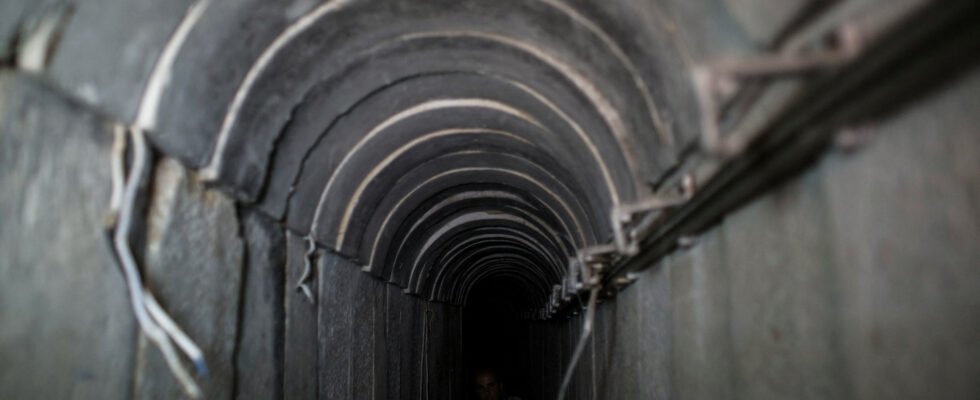Romain Rouillard / Photo credit: ILIA YEFIMOVICH / GETTY IMAGES EUROPE / GETTY IMAGES VIA AFP
modified to
4:47 p.m., December 8, 2023
In its merciless fight against Hamas, the Israeli army is considering a new strategy which would consist of taking the terrorist movement into its own trap. According to Wall Street Journal, the IDF has reportedly developed a vast seawater pumping system near the Al-Chati refugee camp, on the coast of the Palestinian enclave. The objective would then be to pour this water into the famous tunnels, used as hiding places by Hamas terrorists, in order to flood this vast network and drive out their occupants.
The Hamas tunnels, a “vast Swiss cheese”
The system developed would, according to the American daily, move thousands of cubic meters of water per hour and would flood Gaza’s underground areas “in a few weeks”. However, several experts describe a more nuanced reality. Firstly because of the configuration of these tunnels. “It looks like a vast gruyere,” recalls General Jérôme Pellistrandi, editor-in-chief of the magazine. National Defense. These underground galleries are not connected, as the sewers of Paris can be, this strategy will not allow all of the tunnels to be destroyed, believes General Dominique Trinquand.
“Moreover, there is always the question of hostages who may be inside the tunnels. And it is too difficult for the Israeli army to verify who is there,” adds the former head of the mission French military at the UN. Such a strategy would also require considerable time, due to the amount of water required to complete it. “We consider that there are between 500 and 800 km of tunnels. So, there is the risk that it will be a bottomless pit,” points out Jérôme Pellistrandi.
A very polluted basement
Dislodging Hamas terrorists in this way could also cause significant environmental consequences. “We are in an area that is ultra-polluted. However, this water will eventually infiltrate and come out at a given time. And, as the basements are polluted by human activity and overpopulation, the water will carry with them dirt everywhere, which risks aggravating this pollution”, raises Jérôme Pellistrandi. The few rivers in the Gaza Strip, fed underground, could then risk containing “heavy metals, even fuel oil”, warns the former soldier.
This military strategy had already been adopted by Egypt in 2016. It then involved flooding tunnels connecting the Gaza Strip to Egyptian territory. Cairo accused Palestinian activists of using these galleries to supply weapons to jihadist movements active in the Sinai. “We did not have very precise feedback,” notes Jérôme Pellistrandi. Questioned after the publication of the article Wall Street Journal, Richard Hecht, lieutenant-colonel of the Israeli army, did not confirm the development of such a plan… without denying it. “We’re using everything we have to tackle the tunnel systems. That’s all I can say at this point.”
